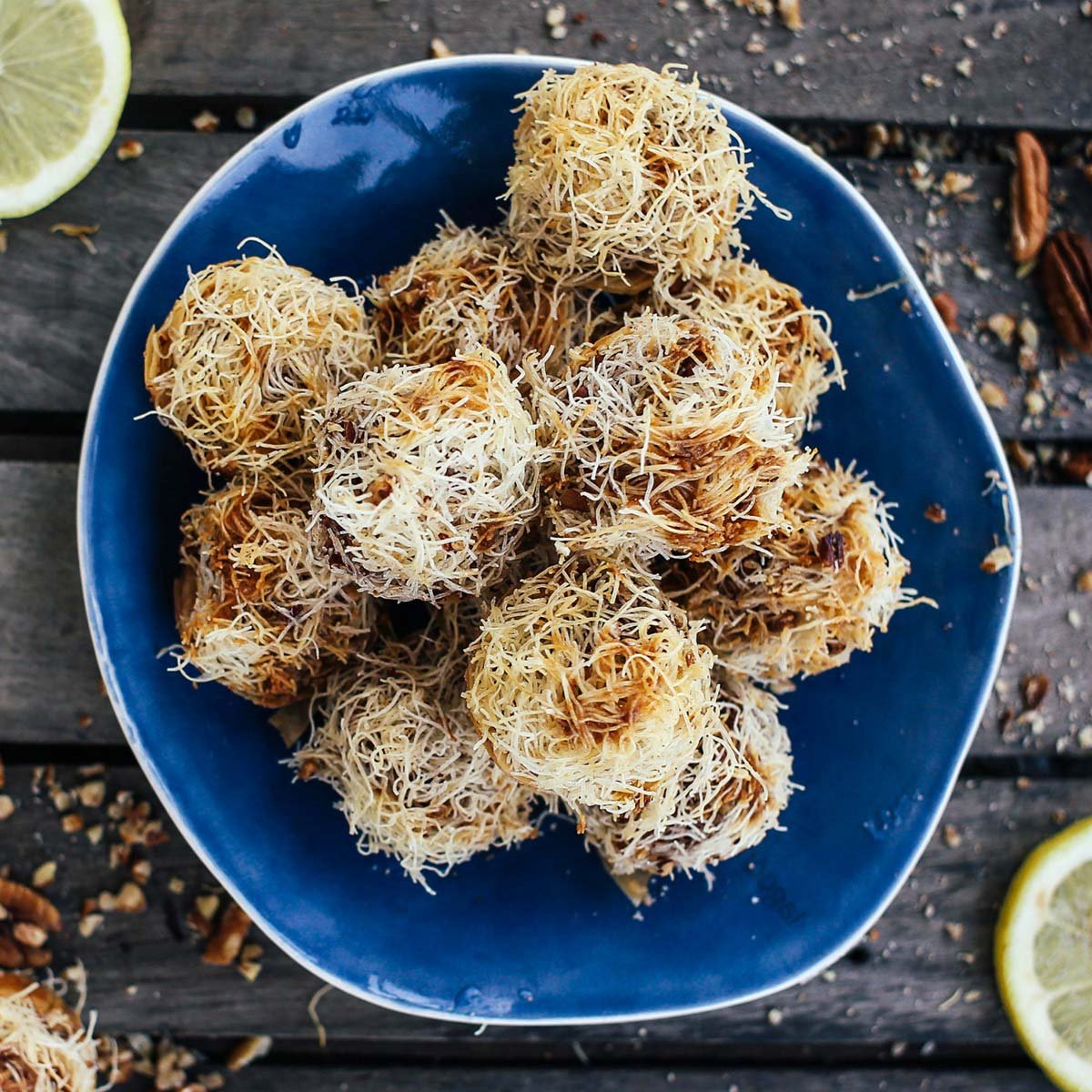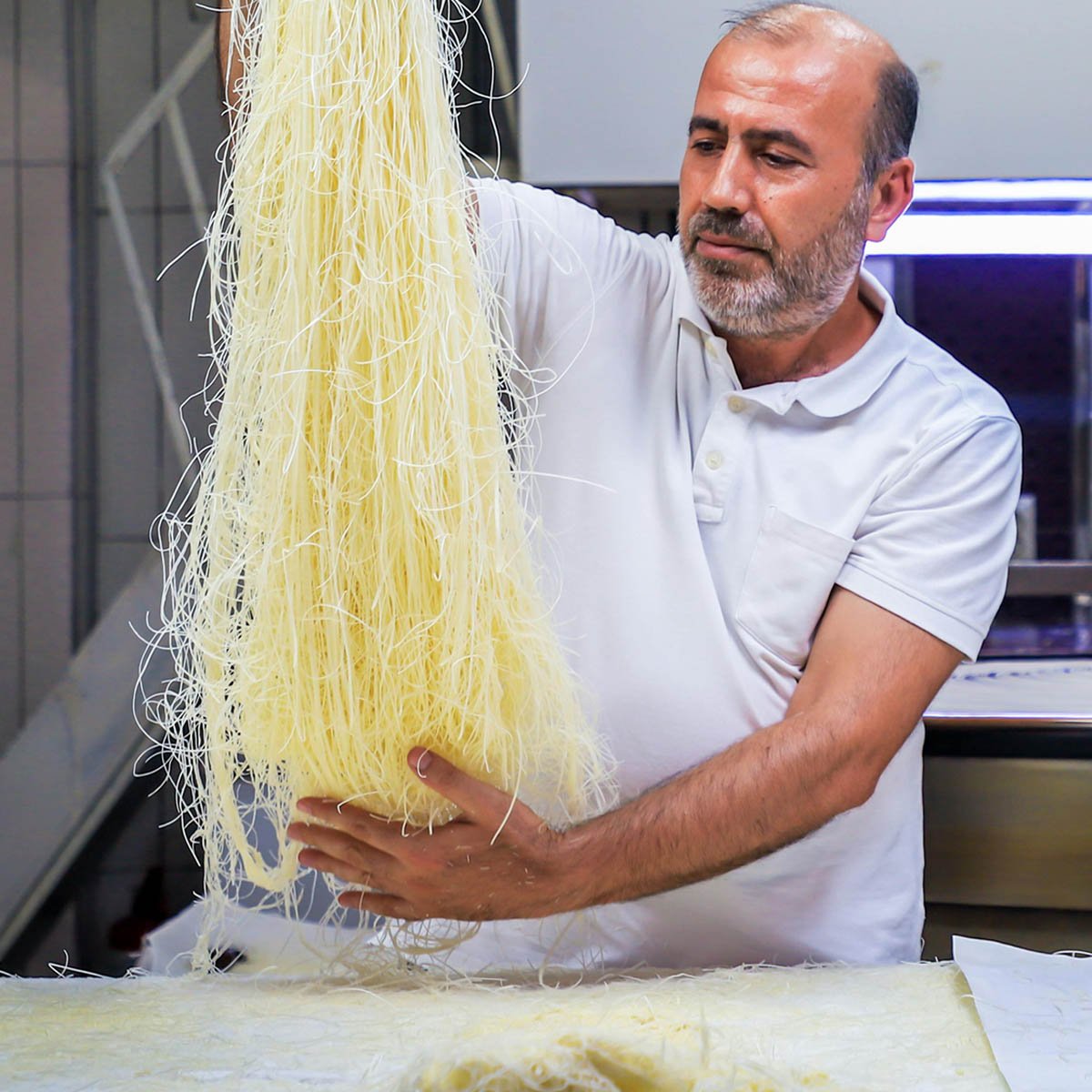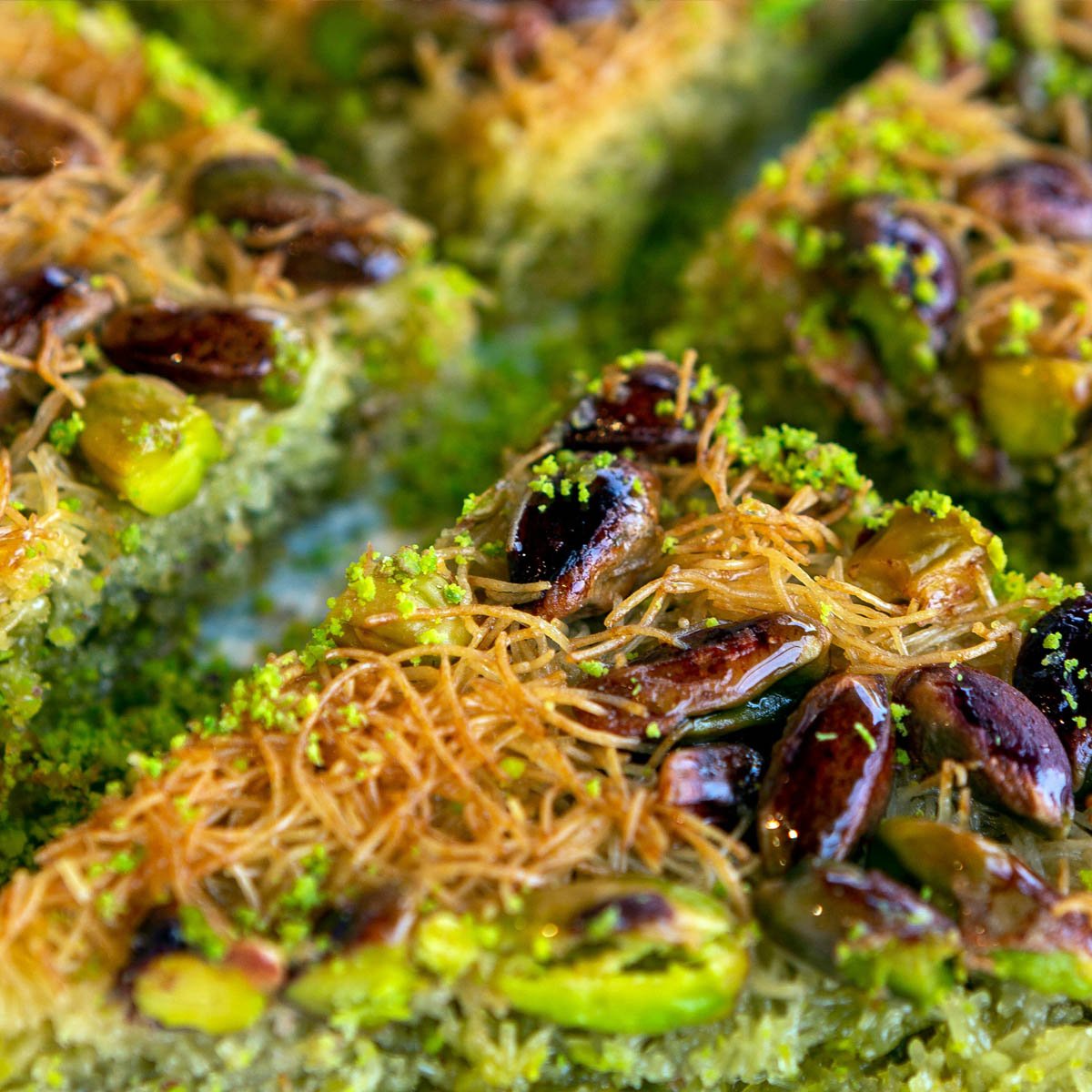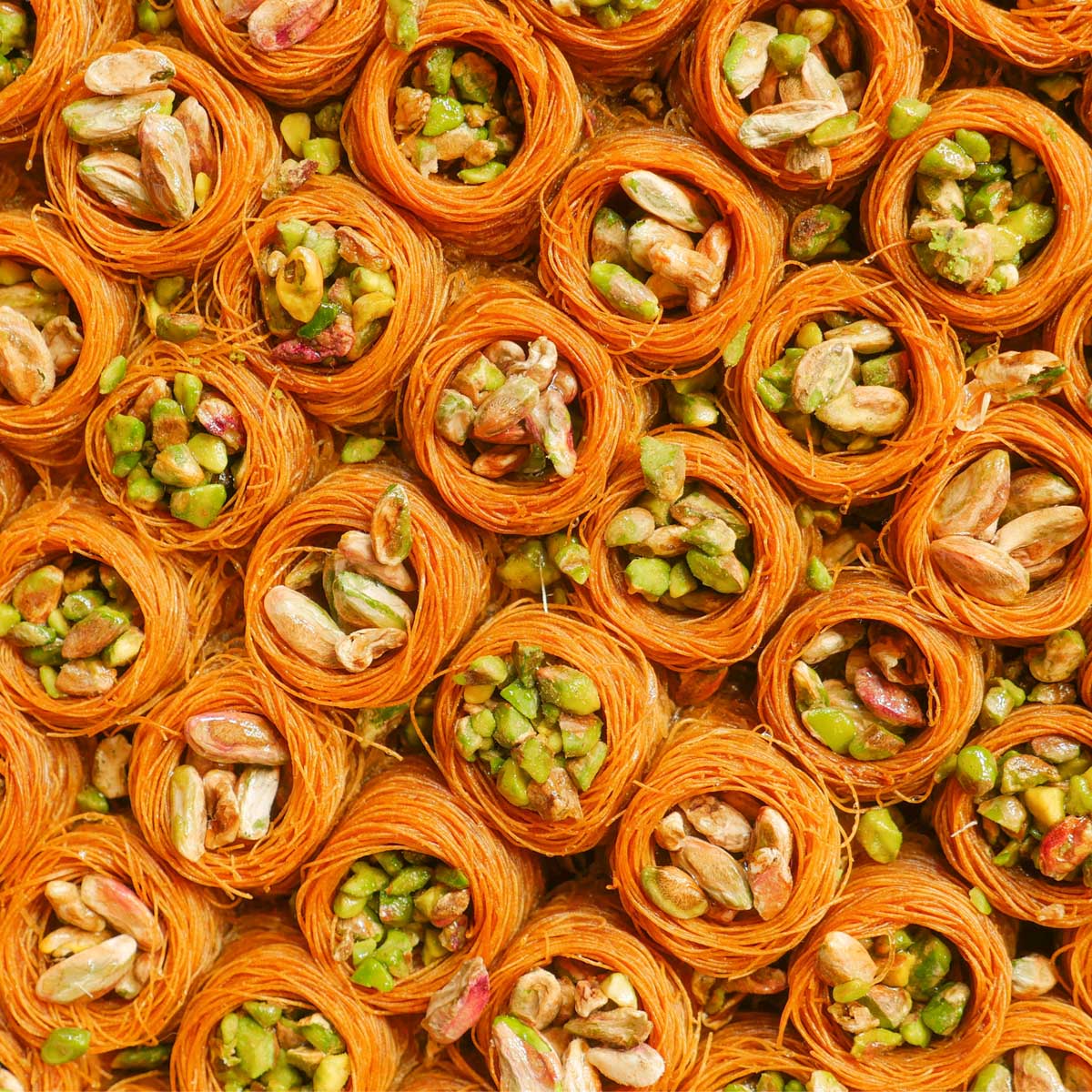Table of Contents
A Delicate Web of Pastry
What is kataifi? At first glance, it looks like a tangle of fine threads, almost like shredded wheat, but it's actually a type of dough. Kataifi (pronounced “ka-ta-ee-fi”) is made from a very thin, noodle-like pastry, similar in composition to phyllo dough that's used in a variety of savory and sweet dishes, especially in Greek, Turkish, and Middle Eastern cuisines. It's the kind of ingredient that feels magical: neutral enough to take on bold flavors, and special enough to impress with its delicate texture.

Where It Comes From
Kataifi has deep roots in the culinary traditions of the Eastern Mediterranean. Much like phyllo, it likely evolved along trade routes and kitchen tables stretching from the Ottoman Empire to modern-day Lebanon and Greece. You'll find it used in different ways across regions, from syrup-soaked desserts in Turkey to savory meat rolls in Greece. It's a great example of how one humble ingredient can reflect the culture of so many homes and hands.
How Kataifi is Made
Making kataifi dough from scratch is an art. The batter is dripped in fine lines onto a hot rotating plate or griddle, creating those signature threads as it cooks almost instantly. Most home cooks (myself included) rely on frozen or fresh pre-made kataifi dough, available in Middle Eastern or specialty grocery stores. Once thawed, it's important to handle it gently, as it can dry out quickly, and you'll want to separate the strands without breaking them.

Sweet and Savory Applications
Kataifi is beloved for its versatility. One of the most iconic uses is in desserts, particularly the Greek kataifi pastry filled with nuts and drenched in a cinnamon-spiced syrup, similar to baklava. But it also shines in savory dishes. Think: shrimp wrapped in kataifi and baked until crisp, or ground meat rolled into a kataifi nest. The contrast between the crunchy exterior and flavorful filling is irresistible.
A Sweet Trend: Dubai Chocolate and the Kataifi Connection
Lately, I've noticed a buzz around something called “Dubai chocolate,” and it's easy to see why it's catching on. These decadent chocolate bars combine Middle Eastern flair with modern indulgence, featuring crispy kataifi pastry layered with rich tahini and pistachio paste, all enrobed in smooth milk chocolate. The texture contrast is remarkable: crunchy strands of kataifi against creamy fillings and that luxurious chocolate shell. It's a trend that not only celebrates regional flavors but also showcases kataifi in a whole new light, it's more than just a traditional pastry, it's become a star in contemporary desserts too.

Tips for Working with Kataifi at Home
If you're ready to try it in your own kitchen, here's what I've learned: Always keep the dough covered with a damp towel while working to prevent drying out. Use melted butter or oil generously between the strands, it helps achieve that golden, crisp finish. And don't be afraid to get creative. Kataifi makes a fantastic topping for casseroles or a fun base for mini tarts.
A Showstopper Worth the Effort
Cooking with kataifi is one of those experiences that feels like more than just following a recipe. It requires a little patience, a bit of care, and a willingness to try something new. But the payoff-a dish that's both traditional and stunning-is well worth the effort. Whether you're making a sweet treat for the holidays or a savory appetizer for friends, kataifi turns a simple dish into a special occasion.

Connect and Explore More
Have you tried kataifi before or cooked with it at home? Share your creations and ideas with us on our social media channels, we love seeing how others bring this beautiful pastry to life. And if you're curious about more international ingredients, don't miss our growing collection of culinary guides and recipes.
























